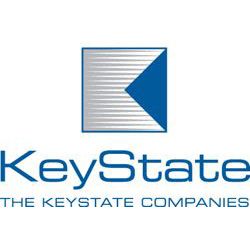For over a decade, large financial institutions like U.S. Bank and Wells Fargo, joined by Fortune 500 giants like Apple and Google, have been the dominant players in solar investment tax credits (ITCs). Driven by federal incentives, these companies have provided funding for the largest solar projects in the country, collecting healthy returns while raising their corporate profiles as environmental/social/governance (ESG) leaders.
The benefits of solar ITCs are hard to ignore. Tax credit investors funding renewable energy projects can significantly offset their federal tax liability and recognize a meaningful annual GAAP earnings benefit. From 2005 to 2020, renewable energy tax credits have fueled the explosive growth of solar and wind power production nearly 18-fold.
The recently passed Inflation Reduction Act is a transformational bill with provisions that will entice large numbers of mid-size businesses and community banks to deploy capital into renewable energy projects across the U.S. It extends solar ITCs for at least ten more years (until greenhouse gas emissions are reduced by 70%) and retroactively increases the ITC from 26% to 30%, effective Jan. 1, 2022. This extension and expansion of ITCs, along with other meaningful incentives included in the bill, will result in a significant increase in renewable energy projects developed and constructed over the next decade.
Community banks are the logical source of financing for solar ITCs and traditional loans in response to this expected flood of mid-size renewable projects. Solar ITCs have a notably better return profile than other types of tax credit investments commonly made by banks. Solar ITCs and the accelerated depreciation associated with a solar power project are fully recognized once it is built and begins producing power. This is quite different from other tax credit investments, such as new markets tax credits (NMTCs), low-income housing tax credits (LIHTCs) and historic rehabilitation tax credits (HTCs), where credits are recognized over the holding period of the
investment (five, seven, 10, or 15 years).
Like other tax equity investments, solar tax equity investments require complex deal structures, specialized project diligence and underwriting, and active ongoing monitoring. Specialty investment management firms like KeyState support community banks hoping to make solar tax credit (i.e., “solar tax equity”) investments by syndicating the investments across small groups of community banks. Without support, community banks may struggle to consistently identify
suitable solar project investment opportunities built by
qualified solar development partners.
Not all solar projects are created equally, and it is critical for a community bank to properly evaluate all aspects of a solar tax equity investment. Investment in particular types of solar projects, including utility, C&I, municipal, and solar community projects, can provide stable and predictable returns. However, a community bank investor should perform considerable due diligence or partner with a firm to assist with the diligence. There are typically three stages of diligence:
- The bank should review the return profile and GAAP model with their tax and audit firms to validate the benefits illustrated by the solar developer and the anticipated impact of the investment on the bank’s earnings profile and capital.
- The bank should work with regulatory counsel to identify the path to approval for the investment. Solar tax equity investments are permissible for national (little “n”) banks under April 1, 2021, OCC Rule (12 CFR 7.1025). Banks have been making solar tax equity investments based on OCC-published guidance for over a decade. In 2021, this new OCC rule codified that guidance. It provides a straightforward roadmap and goes so far as to encourage community banks to consider solar tax equity investments. Alternatively, under Section 4(c)(6) of the Bank Holding Company Act, holding companies under $10 billion in assets may also invest in a properly structured solar tax equity fund managed by a professional asset manager.
- The bank must underwrite the solar developer and each individual solar project. Community banks should partner with a firm that has experience evaluating and underwriting solar projects, and the bank’s diligence should ensure that there are structural mitigants in place to fully address the unique risks associated with solar tax equity financings.
Beyond the compelling return profile and stable and predictable cash flows offered by conservative, investment-grade solar projects, achieving energy independence and reducing carbon emissions are critical goals in and of themselves. Solar tax credit investments can be a key component of a bank’s broader ESG strategy. The bank can monitor and report the amount of clean energy generated by the projects it has financed and include this information in an annual renewable energy finance impact report or a broader annual sustainability report.
Josh Miller is CEO of The KeyState Companies, which manages tax-advantaged investment and insurance structures for over 130 community banks across the country. KeyState Renewables launched its solar tax equity fund platform, SOLCAP, in 2001, which, to date, SOLCAP has financed over $120 million across 35 mid-size U.S. solar projects in seven states. SOLCAP expects to double this in 2023, providing another $130 million in capital for new solar project development.









